Lemon tetras are a popular species of tropical freshwater fish, favored for their bright coloration, hardiness, and peaceful disposition.
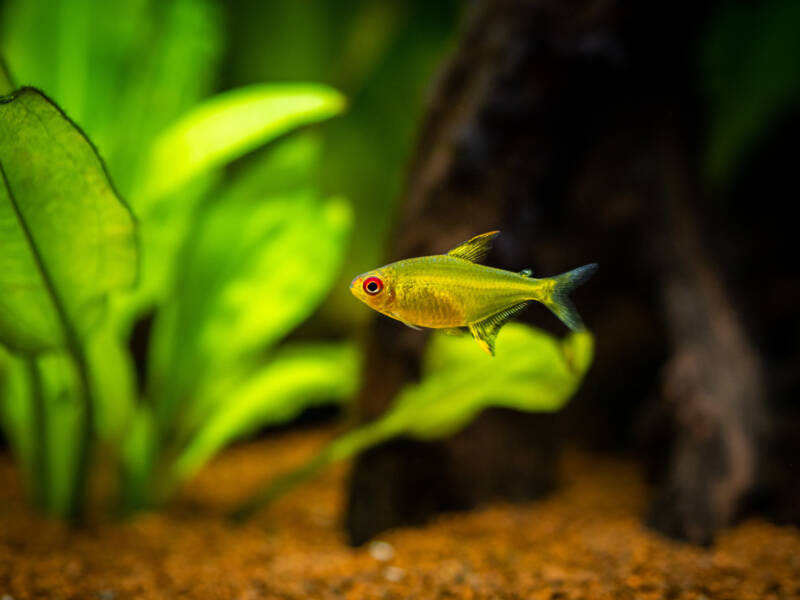
Their conditions in the wild can be easily replicated in captivity, resulting in breathtaking natural displays of community behavior, breeding, and even defense.
As a result, lemon tetras have proven themselves to be enduringly popular in the aquarium trade, starting as one of the first commercially available and bred species and continuing today as a staple in many community tanks.
[toc]
Appearance
Lemon tetras are so named for their most distinctive marking: bright yellow sections or stripes on the dorsal and anal fins.
Their eyes are similarly striking, as the upper half is an intense red color.
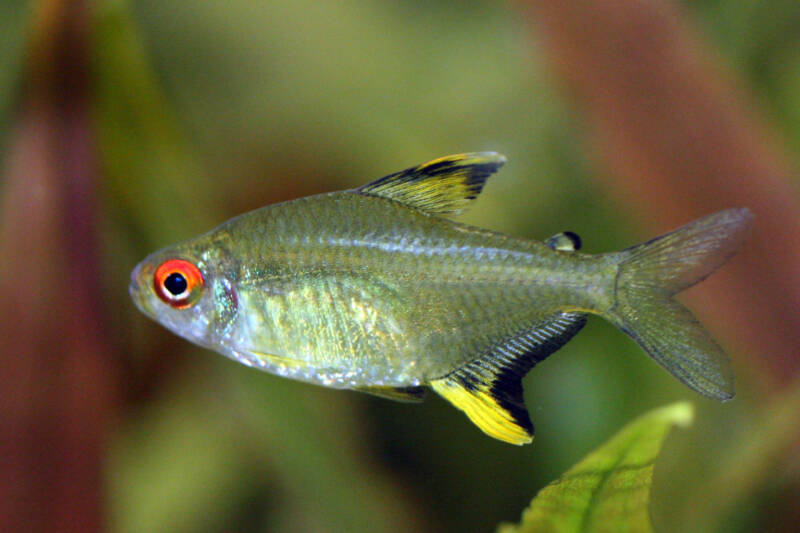
The rest of their body and fins alternate between a translucent yellow and white, glass-like luster called hyaline.
In fact, colors are so integral to the lemon tetra that this fish’s health can be gauged on its appearance.
If the eyes are dull and the body colors subdued, it’s an indication that something is wrong.
Their bodies are fairly deep for a tetra and resemble a diamond.
Adults grow to roughly 2 inches and are sexed according to the width of the black stripe along the anal fin.
Despite their relatively small size, they can live up to 8 years in captivity, making them one of the hardiest and longest-living types of tetras.
Behavior

The most notable behavioral trait is the drive to school present in all tetras, the lemon tetra included.
In the wild, their schools can number in the thousands, though they’re equally as content with a few dozen (or hundred, depending on your tank size).
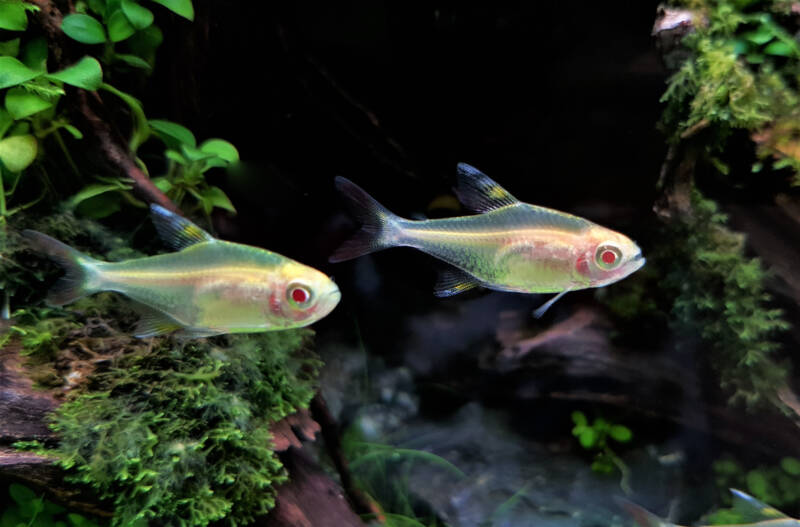
These fish are not aggressive and do well in community tanks with a variety of other species, provided the species are all generally peaceful.
Aggressive tank mates will result in defensive maneuvers from lemon tetras. For truly natural behavior, it’s recommended to use other South American species.
Tank Mates

Tankmates that lemon tetras generally do well with include more laidback species that don’t become overly aggressive when faced with competition for food or territory, such as:
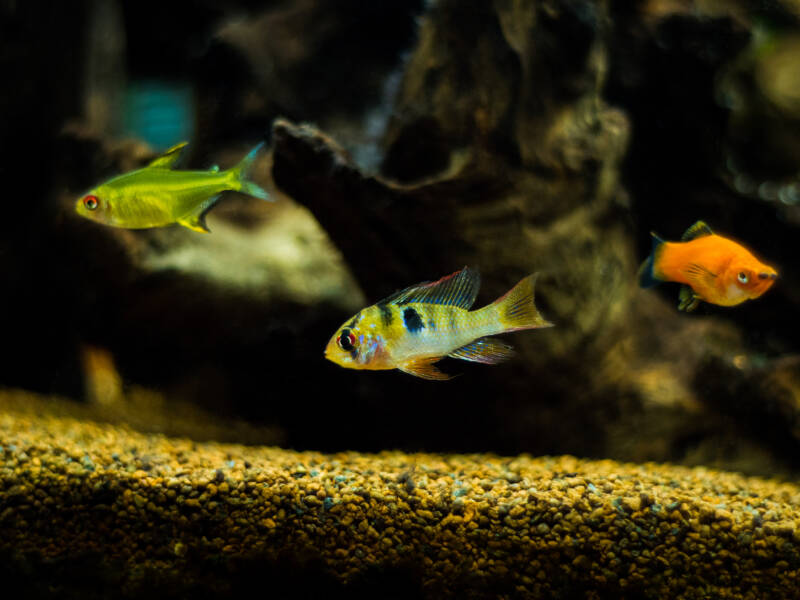
Keep in mind, owners should still monitor their tank inhabitants closely.
Even relatively peaceful cichlids can become aggressive toward tetra; similarly, tetra may decide to snack on shrimp.
Commercial Presence
The lemon tetra was first introduced into the aquarium trade in the early to mid-1900s, making them an established staple for community tanks.
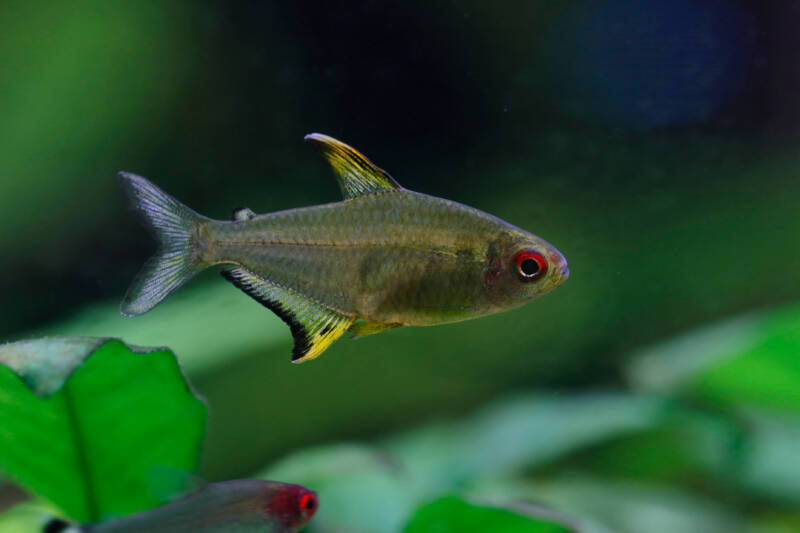
They are also hardy and get along well with many other species, further endearing them to both new and experienced aquarists.
Like several other tetras, they spawn communally and produce many eggs.
This species is not endangered or threatened in the wild and its easy breeding in captivity means there’s healthy aquaculture or tank-bred population available for purchase.
Caring for Lemon Tetras
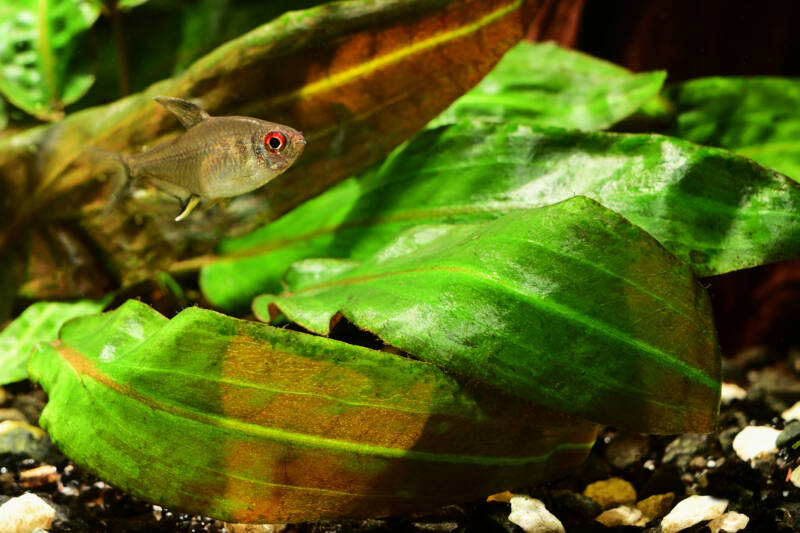
These fish are a topical shoaling species that originated in South America.
The environment they naturally inhabit can be easily replicated in an aquarium, which is beneficial for both finned inhabitants and onlookers.
Water Parameters
In order for lemon tetras to not only survive but thrive and remain healthy, they’ll need clean water that meets the water parameters outlined below.
- Freshwater: These fish are entirely freshwater, and cannot survive in brackish or saltwater. Tread carefully if using aquarium salt for health purposes.
- pH Range: A pH range of 6.0 – 7.5 is acceptable but may be affected by other tank elements such as tannins or driftwood.
- Hardness: A dGH of up to 8.0 is acceptable, but anything above will cause health issues; this will be reflected in sudden dull coloring in the tetras.
- Temperature: These fish prefer warmer temperatures of 70 – 82°F, but aren’t hardy enough to withstand radically hotter or cooler waters.
- Ammonia: The best ammonia level is a nonexistent ammonia level, as even levels as low as 2 – 5 ppm can cause health issues.
- Nitrites: Just like ammonia and nitrates, it’s best to keep the nitrite levels low or, preferably, absent all together.
- Nitrates: Having plants will help keep these levels low, but a clean tank and water is the best way to ensure nitrates stay at 0 ppm.
These fish are especially sensitive to their surroundings and will need water changes at least once per week.
The amount of water changed will depend on the amount of fish in the tank, the amount of waste they produce, and the amount they’re fed daily or weekly.
Recreating a Natural Environment
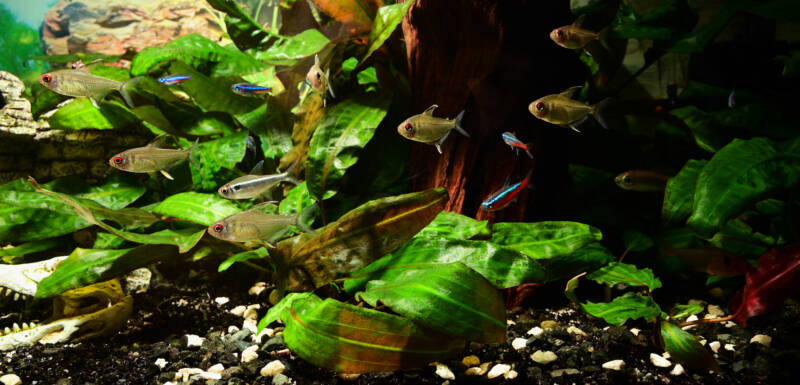
Lemon tetras require a generous swimming space for proper schooling that includes both heavily planted areas and sections for open swimming.
The following features are some of the key traits to include when recreating the lemon tetras’ natural environment.
- Shallow to Moderate Water Depth: Lower breeding tanks and horizontal aquariums are much preferred to tall or vertical tanks for this fish so that they can properly school.
- Heavily Planted Spaces: Lemon tetras prefer live plants to feel comfortable and engage in breeding behaviors; this also means that plant-grade substrate and lighting are a must.
- Modest Current Flow: These fish are used to moving water and mild currents, so it’s recommended to use a wavemaker and replicate cross-tank flows.
- Warmer Water: As indicated by the label “tropical fish,” these tetras will only be able to thrive in warmer temperatures; cooler water may result in health issues. So a heater and thermometer are necessary.
- Ample Shoaling Buddies: The absolute minimum for a school is six tetras, but these fish are happiest when at least 20 or 30 are present. The more, the merrier!
- At Least 20 Gallons: Let’s be clear, 20 gallons is the bare minimum when it comes to this species. Shoals and tanks share the same motto here – bigger is always better.
Optional elements of a tank setup include leaf litter, tannins, and floating plants. In these conditions, lemon tetras will easily thrive.
This species does well in community tanks with other peaceful inhabitants and will likely share the same diet as their tank mates.
They accept a variety of flake, frozen, and live foods.
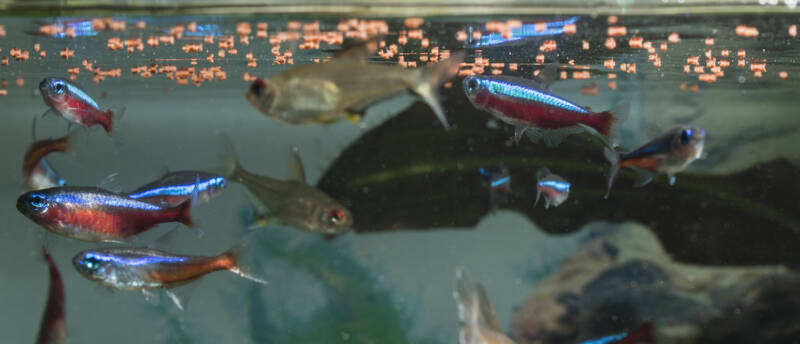
Breeding
Just as they live in large schools, lemon tetras also breed, spawn, and birth in large numbers.
Males will choose specific spots in the aquarium and display to rival males, thus hopefully enticing females into a chase.
Courtship and breeding take place in densely planted areas. Both potential parents will flash their fins and move closer to the other.
If amenable, females will then release their eggs for males to fertilize.
The eggs will fall into vegetation, substrate, or egg traps below.
Each lemon tetra can lay up to 300 eggs at a time, although it’s highly unlikely that this same number will eventually hatch.
Habitual egg-eating from adults and the eggs’ general sensitivity to water conditions greatly reduce the number of eggs and fry.
Lemon Tetras vs. Other Popular Tetras
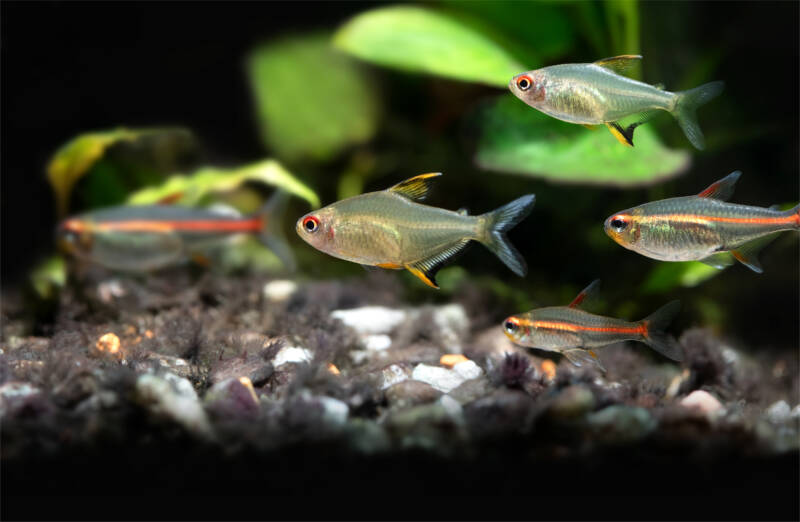
Though tetras share the same general traits and tank requirements, there are differences that appear depending on the species.
Below, we’ve outlined three of the most popular aquarium tetras.
| Lemon Tetra | Cardinal Tetra | Ember Tetra | |
| Fresh or Saltwater | Freshwater | Freshwater | Freshwater |
| pH Range | 6.0 – 7.5 | 5.5 – 7.0 | 5.0 – 7.0 |
| dGH Range | Up to 8.0 | Up to 4.0 | 5.0 – 15.0 |
| Temperature | 70 – 82°F | 65 – 82°F | 72 – 82°F |
| Typical Age | 6 – 8 years | 3 – 5 years | 1 – 2 years |
| Length | 1.5 – 2 in. | 1 – 1.5 in. | 0.5 – 1 in. |
| Distinctive Markings | Yellow fin markings; red eyes | Neon red and blue body stripes | Bright orange body; visible skeleton |
Though lemon tetras require more specific water parameters to thrive, they are still fairly hardy and worth the investment, especially as they are larger than most tetras and live longer.
This makes them a valuable addition to any tank.
Are Lemon Tetras Right For You?
If you have a large aquarium and are interested in a peaceful community tank, lemon tetras may be the right fish for you.
Their overall coloring and schooling behaviors make them enjoyable to watch, especially when contrasted with similar remarkably-colored fish.
And their easygoing temperament means they can be kept on their own in a school or added to an existing tank.
Their hardiness makes them an ideal fish for beginner aquarists, but be warned: their environmental requirements and sensitivity to water parameters require more upkeep, both in terms of time and money.
Live plants and frequent water changes are a must, as these fish are easily affected.
Their lifespan also means that they’re more of a commitment than other tetra species.
But if you’re ready to invest the resources into creating a tank that mimics a more natural environment, then these fish are a worthwhile addition!
